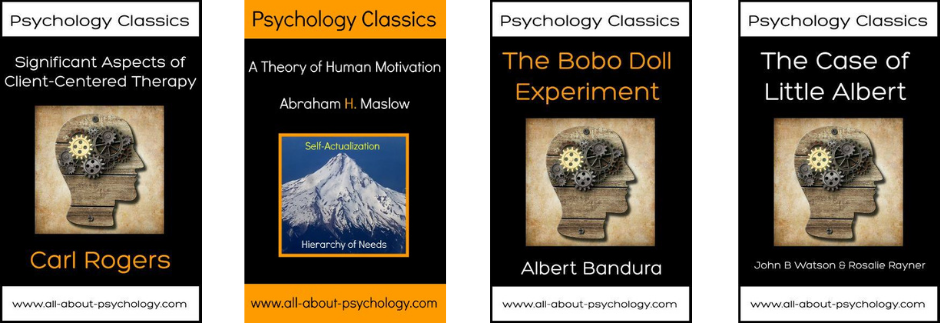Psychology Classics On Amazon

The Psychology of Poetry: How Poems Move the Mind and Heart

David Webb (Founder and Editor of All-About-Psychology.com)
Have you ever read a poem and felt a chill ripple down your arms or a sudden sense that the poet had put your feelings into words before you could? That response is not just sentiment. A growing body of research suggests poetry can soothe distress, spark creativity, and even light up the brain’s reward systems. Therapists have used it for decades. Neuroscientists are now explaining why it works.
Below is a guided tour through what poetry does for our minds and why it matters.
Why poetry helps when life gets complicated
Poetry is compact language with a high emotional charge. That makes it uniquely useful when feelings are tangled or hard to name.
Emotional processing and self-awareness. Clinicians report that writing or selecting a poem helps people “externalize” what feels unsayable. On the page, anger, grief, or fear becomes concrete and more manageable. Groups from palliative care patients to refugees have used poetry to find words for overwhelming experiences, often with gains in mood, insight, and connection.
A good fit with positive psychology. Poetry practice maps onto Martin Seligman’s Positive Emotion, Engagement, Relationships, Meaning, and Accomplishment (PERMA) framework. It can raise positive emotion, create deep engagement or flow, strengthen relationships through shared language, add meaning by shaping a life story, and build a sense of accomplishment as people grow more comfortable expressing their thoughts and feelings in their own words.
Safe distance, real truth. Metaphor offers a gentle way to approach difficult material. Saying “And I, and Silence, some strange Race, / Wrecked, solitary, here-” as Emily Dickinson does in her poem, I felt a Funeral, in my Brain, can be less threatening than a bare statement of mental turmoil, yet it often reveals more.
I felt a Funeral, in my Brain,
And Mourners to and fro
Kept treading - treading - till it seemed
That Sense was breaking through -
And when they all were seated,
A Service, like a Drum -
Kept beating - beating - till I thought My mind was going numb -
And then I heard them lift a Box
And creak across my Soul
With those same Boots of Lead, again,
Then Space - began to toll,
As all the Heavens were a Bell,
And Being, but an Ear,
And I, and Silence, some strange Race
Wrecked, solitary, here -
And then a Plank in Reason, broke,
And I dropped down, and down -
And hit a World, at every plunge,
And Finished knowing - then -
The brain on poetry
Poetry does not just sound different from ordinary reading, it lights up the brain differently too.
Reward and chills. Studies using skin sensors and brain imaging find that lines of poetry can elicit chills and goosebumps. Peaks often occur at closures, such as the end of a line or stanza. During these moments, regions involved in pleasure and anticipation show increased activity. Interestingly, the body may also show signs of tension. Being moved is often a blend of pleasure and ache.
Pattern joy. Part of the pleasure comes from making connections. Novel metaphors and surprising turns of phrase nudge the brain to link distant ideas. Solving a small puzzle in language produces a subtle cognitive reward.
Right place, right rhythm. Neuroscience shows that the right hemisphere plays a vital role ininterpreting emotional tone and prosody, meaning the changes in pitch, rhythm, and intonation that convey mood and meaning. That is one reason rhythm, rhyme, and the musicality of poetry often feel physical, not just cerebral.
Poetry and creativity: the kind of poem matters
Poetry appears to influence creative thinking, especially the flexible, free-associative style called divergent thinking.
Open metaphors can widen thought. Research suggests that poems with unconventional or open metaphors and narrative imagery tend to increase fluency and flexibility. They broaden the net of associations, which helps ideas jump categories.
Conventional metaphors may steady rather than stretch. Familiar, closed metaphors can be lovely and useful, yet they do not always boost flexibility. For creativity sprints, readers often benefit from poems that resist easy paraphrase.
Mind-wandering helps. Brief poetry breaks that allow the mind to drift can unstick a problem. The combination of compact form and suggestion invites a productive kind of daydreaming.
Inside the making of a poem
Composing poetry often balances free flow with focused refinement.
Two mental networks in play. When a poet starts drafting, they often loosen control to let words and images rise up unexpectedly, almost like brainstorming without judgment. Later, they switch into editing mode, tightening the language, shaping rhythm, and cutting what does not fit. Psychologically, this can be viewed as two mental networks working together: one that opens the door to new ideas, and one that organizes them. Skilled poets tend to move back and forth between the two more fluidly, which shows why practice in craft can actually open up, not shut down, creativity.
Seeds and returns. Many poets describe getting a sudden spark; a phrase, an image, or a rhythm that arrives uninvited. That seed may sit quietly for days, weeks, or even months before the poet returns to nurture it into a finished piece. This process is known as incubation, whereby the mind keeps working in the background, and when we step away, ideas often resurface with more clarity. It is the same process responsible for those everyday “aha” moments, like when a solution to a problem pops into your head while taking a walk or doing the dishes.
Why poetic language hits differently
Metaphor as meaning-maker. A strong metaphor links distant concepts to form a third thing that feels more precise than either alone. Literary metaphors often pair dissimilar ideas with unexpected wording, which forces new seeing.
Sound and shape. The rhythmic structure in poetry can echo heartbeat. Alliteration, assonance, and internal rhyme create small pleasures that keep attention focused. Reading aloud turns a poem into a felt event.
Defamiliarization. Poetry often makes the familiar strange. That shift can reawaken attention and shake loose old assumptions.
Poetry in real life: ideas you can use
You do not need to be a poet to benefit from poetry.
Read small, read often. One short poem with coffee. A poem at lunch. Read aloud when you can. Notice where your attention quickens.
Keep a poetry journal. Copy a few lines that stay with you and note why. Try a two minute free write in response. You are building a personal anthology of what matters to you.
Trade poems with friends. A weekly text of a favorite poem can deepen relationships. Poetry is a social art as well as a solitary one.
Try writing, gently. Describe today using one image from nature. Write a six line list where each line starts with “It feels like.” Use metaphor to give shape to whatever is hard to say.
Bring it into work or school. A poem shared at the start of a meeting or class can reset attention and spark curiosity. For creativity tasks, choose poems with open imagery that invite multiple readings.
Poetry and therapy
Poetry therapy and bibliotherapy have long histories. Practitioners integrate careful poem selection, reflective writing, and guided discussion to help clients name emotions, reframe beliefs, and feel less alone. Programs in medical schools and hospitals use poetry to train empathy and to help both patients and clinicians process loss and meaning. The goal is not to force art into a clinical box. It is to use a form that human beings have relied on for centuries to say the hard thing well.
Common questions people ask
Do you have to be an “artsy” person to enjoy or benefit from poetry? No. Infants respond to rhyme and rhythm. Teenagers use poems to test identity. Adults turn to poetry in love and grief. This expressive art form belongs to everyone.
Does understanding every line matter? Not at first. Follow the energy. Let images do their work. Paraphrase later if you like. As Billy Collins (Poet Laureate of the United States from 2001 to 2003) suggests in Introduction to Poetry, poems are meant to be experienced, played with, and felt, not dissected and forced into a single “meaning.”
I ask them to take a poem
and hold it up to the light
like a color slide
or press an ear against its hive.
I say drop a mouse into a poem
and watch him probe his way out,
or walk inside the poem’s room
and feel the walls for a light switch.
I want them to waterski
across the surface of a poem
waving at the author’s name on the shore.
But all they want to do
is tie the poem to a chair with rope
and torture a confession out of it.
They begin beating it with a hose
to find out what it really means.
Can poems be bad for you? Intense material can stir intense feelings. That is not a flaw, but it is a reason to choose work that meets you where you are. In clinical contexts, careful facilitation matters.
Try this quick poetry exercise
Pick a small moment from your day and capture it in words.
1. Start with “Today felt like…” and finish the sentence with a clear image or comparison, something you could actually picture in your mind. For example: “Today felt like a door left half open.”
2. Add three sensory details such as something you saw, heard, touched, smelled, or tasted.
3. End with a line that surprises you, even a little. It might change the mood, add humor, or reveal a hidden thought.
That is all it takes. Congratulations, you have written a tiny poem. More importantly, you have taken a small piece of today and turned it into something meaningful.
Poetry is not a luxury. It is a reliable way to feel, think, and connect with more clarity. A poem can steady you when life is messy, widen your perspective when ideas feel stuck, and offer a small ceremony of attention in a noisy day. You do not need special training to begin. You only need to notice where the words start to sing. Talking of which, here are some timeless poems for you to check out that speak to the mind and heart.
William Wordsworth, I Wandered Lonely as a Cloud (1807)
A joyful reminder of nature’s power to soothe and restore the mind.
Emily Dickinson, Hope is the thing with feathers (1861)
A compact, unforgettable metaphor for resilience and optimism.
John Keats, Ode to a Nightingale (1819)
A profound meditation on suffering, beauty, and the power of art.
Alfred, Lord Tennyson, In Memoriam A.H.H. (1850) [selections]
One of the most moving elegies in English literature, exploring grief, faith, and resilience.
Dylan Thomas, Do Not Go Gentle into That Good Night (1951)
A haunting refrain of urgency and defiance, urging us to fight against life’s inevitable ending.
Cheers,
David Webb (Check Out My Psychology Substack Articles)
Founder, All-About-Psychology.com
Author | Psychology Educator | Psychology Content Marketing Specialist
🚀 Want to get your brand, book, course, newsletter, podcast or website in front of a highly engaged psychology audience? I can help!
All-About-Psychology.com now offers advertising, sponsorship and content marketing opportunities across one of the web’s most trusted psychology platforms - visited over 1.2 million times a year and followed by over 1 million social media followers.
Whether you're a blogger, author, educator, startup, or organization in the psychology, mental health, or self-help space - this is your chance to leverage the massive reach of the All About Psychology website and social media channels.
🎯 Exclusive placement
🔗 High-authority backlink
👀 A loyal niche audience
Learn more and explore advertising and sponsorship options here: 👉 www.all-about-psychology.com/psychology-advertising.html

Know someone who would be interested in reading
The Psychology of Poetry: How Poems Move the Mind and Heart.
Share This Page With Them.
Go From "
The Psychology of Poetry: How Poems Move the Mind and Heart" Back To The Home Page
